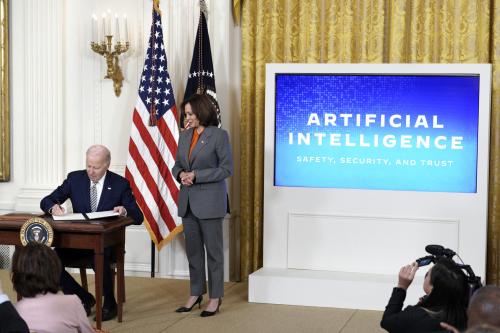This post explores how our changing information environment is creating a new generation of people with distinctive information processing characteristics and discusses what this means for how governments communicate with their citizens.
We live in an age of Information Overload, with over 2 billion Internet users and the rise of social media, there is far more information than we can possibly process. As information overload intensifies and surpasses our processing capacity, some new information processing behaviors have started to emerge:
- Individuals began preferring short messages to lengthy messages.
- Individuals began preferring pictures and video clips to written texts.
It takes too long to read full texts and there are increasing opportunity costs in focusing on a few long articles rather than skimming many articles. The rapid rise of Twitter with its 140 character limit reflects this trend. Long articles quickly lose their readers (CNN now has three line summaries for many of its articles).
Along with this preference toward short messages, people began favoring pictures and video clips. The rise of YouTube and Instagram reflects this trend. As the saying goes, “a picture is worth a thousand words,” pictures and video compact a large volume of information and this is useful in our information-rich environment. Also, watching YouTube clips is a relatively simpler activity than reading. Watching video negates the need for literacy skills, takes less time to consume, and are easy to understand. These changes are thought to have an influence on the way people think:
- People’s attention spans are shortened as people use short-term memory with more regularity than long-term memory.
- People become more emotional when images are used in communication.
- Image and emotion have a greater impact on people’s perception than logical arguments based on objective facts and data.
In a recent book, Nicholas Carr argued that our “rapid, distracted sampling of small bits of information” encourages the use of short-term memory, renders the new generation of individuals relatively “shallow” in their thinking and lacking in well-thought-through perspectives. In addition to the “shallowness” of the new generation as Carr indicated, this new generation can also be characterized as more emotional. As McLuhan is quoted saying, “medium is the message.” Pictures and video images come imbued with emotional attachments and this influences people’s perception and reaction to the information communicated. For instance, the word “American Flag” (written text) and a picture of an American flag being raised in the battle field speaks to the notion of “American Flag,” but the picture or video comes with emotional attachments that influence people’s reactions. As we increasingly use images and videos as the medium of communication, we are knowingly or unknowingly influenced by the emotion attached to the images used. Here not only the message of American flag but also how you convey the message “American Flag” matters.
So what does this tell us about the communication between citizens and the government?
- In the midst of information overload, government communication is unlikely to reach citizens effectively. Governments must now compete against other entities such as businesses and nonprofits to vie for the attention of the people. This is a difficult task as people are constantly being bombarded with eye-catching headlines and sensational advertisements while governments try to reach them with their traditional lengthy official documents and official announcements focused on facts and data. Government information quickly loses the interest of the people. The “if we provide, they will come (to read)” mentality does not work in the new communication environment. Unless governments effectively catches the attention of the people, government communication will be buried in the flood of all other information.
- Even if government communication reached the public, its usual fashion of conveying information not only quickly loses the interest of the people but also falls short in effectively persuading them to participate in the policy. The goal of policy communication can be thought of as informing citizens of the existence of a policy and persuading them to participate in and/or comply with the policy requirements. If indeed people are emotionally-driven and “shallower” in the new environment, they are less likely to be persuaded by the government’s traditional ways of communication, and the rate of policy participation or compliance may decline in the new information environment.
With our environment of information overload and the shifting medium of communication towards videos and short texts, the government should be more mindful of the habits and tendencies of the new information generation who are “shallower” and emotional as a result of their effort to cope with the information overload. Governments should consider engaging more actively in the “marketing” and image making of its policies, taking advantage of emerging image and video-oriented communication technologies instead of solely adhering to its traditional ways of communication. New methods should complement effective policy communication. Tailoring government strategy to our current information-rich environment will be critical to successful policy implementation.
Author’s Note: A “longer” version of this article can be found at “Ahn, Michael J. (2012). Effective Public Policy Delivery System in the Age of Information Overload – The Role of Imagery on Citizen Perception and Compliance of Public Policy. The Korean Social Science Journal, Vol. 39, No. 1, pp. 1-17.”



Commentary
Effective Policy Communication in the Age of Information Overload and YouTube
August 11, 2014